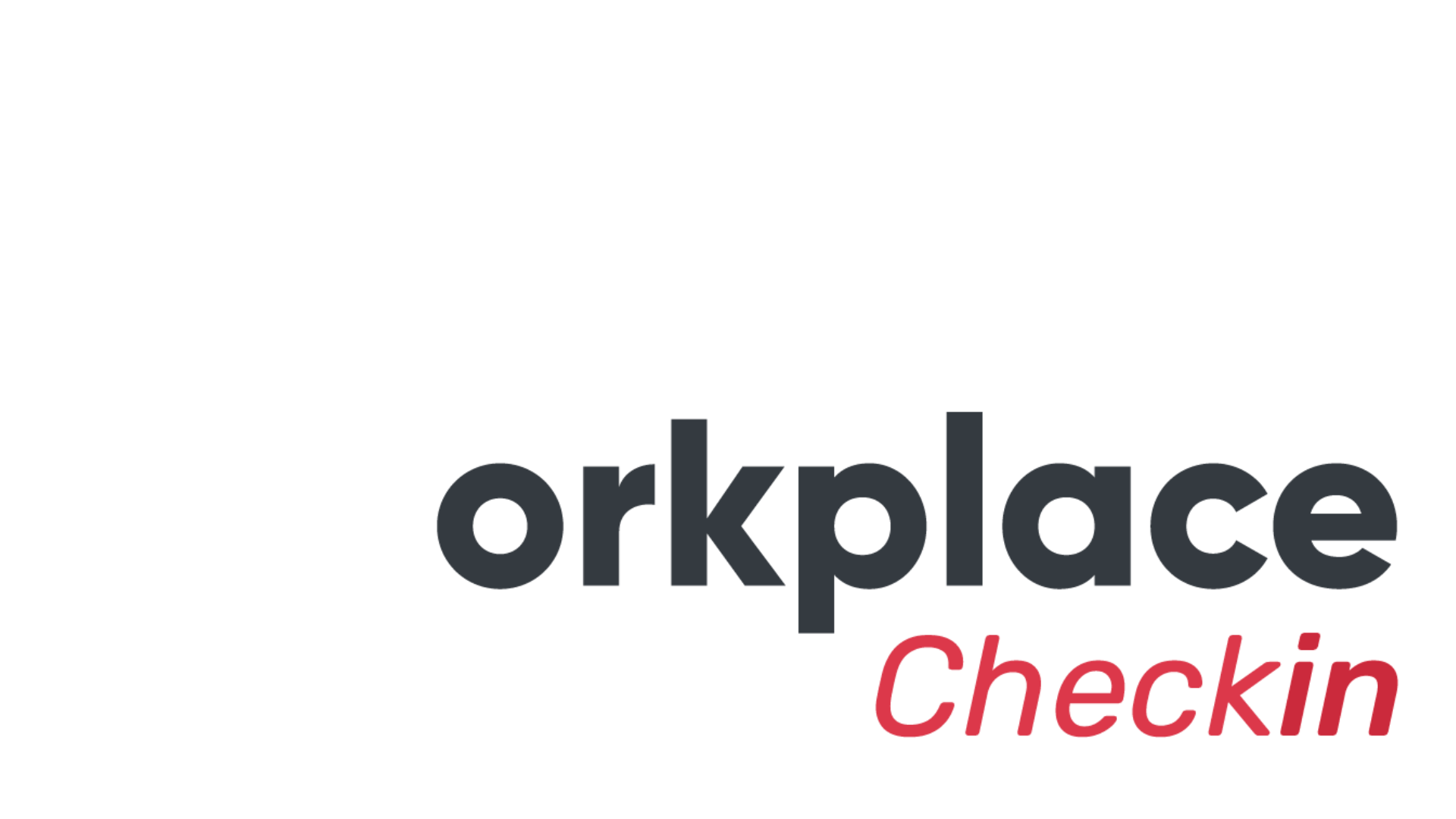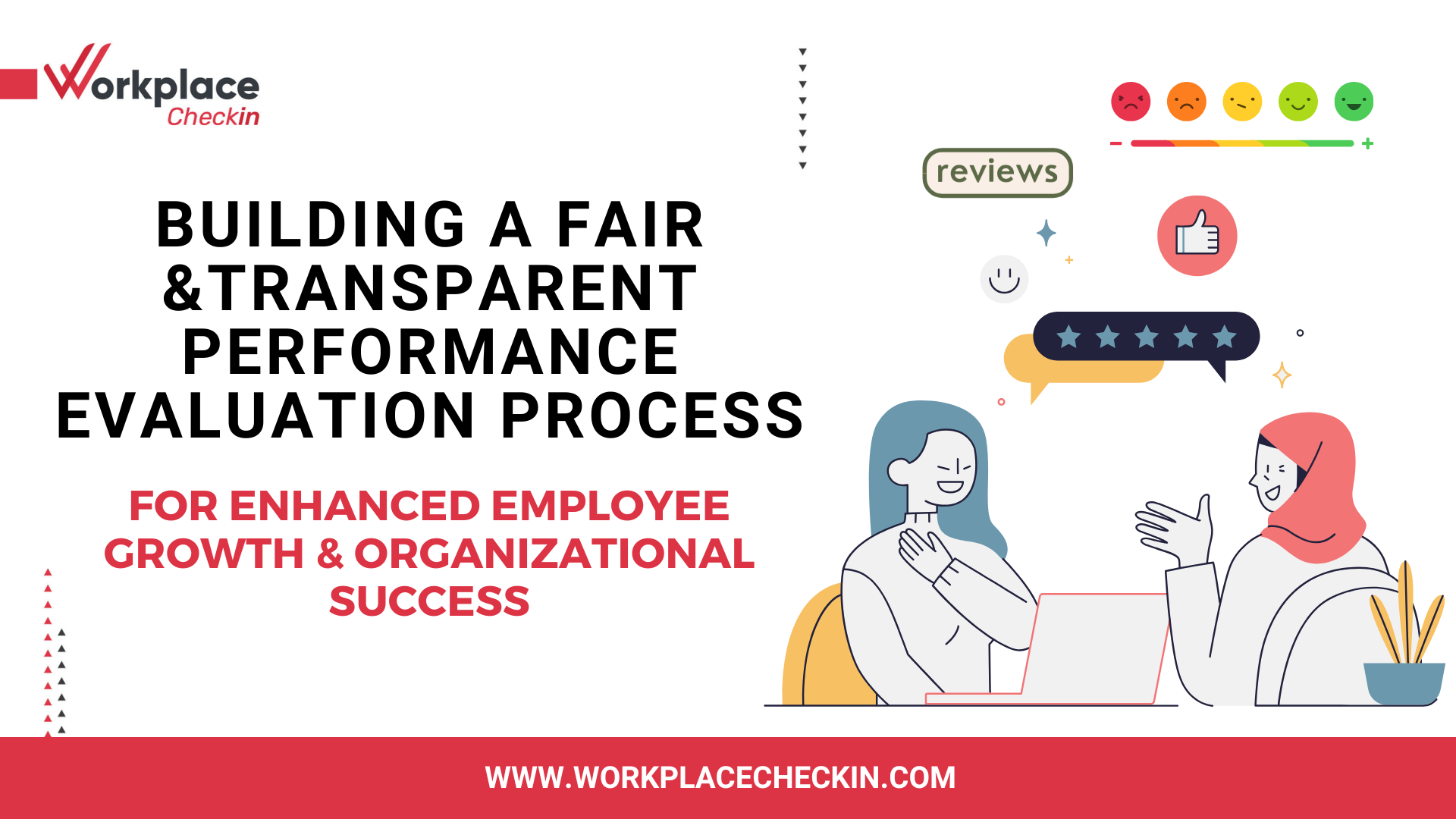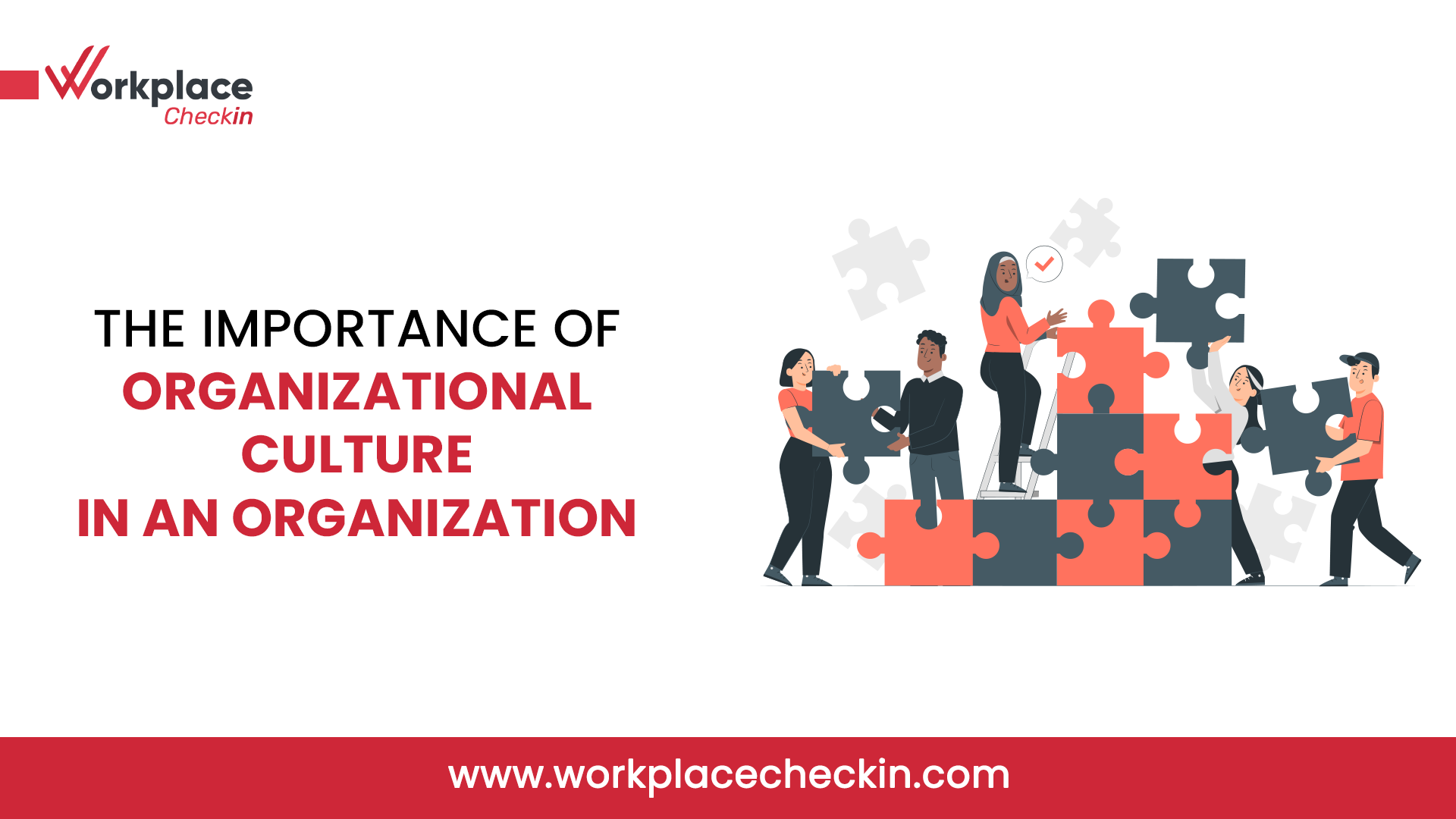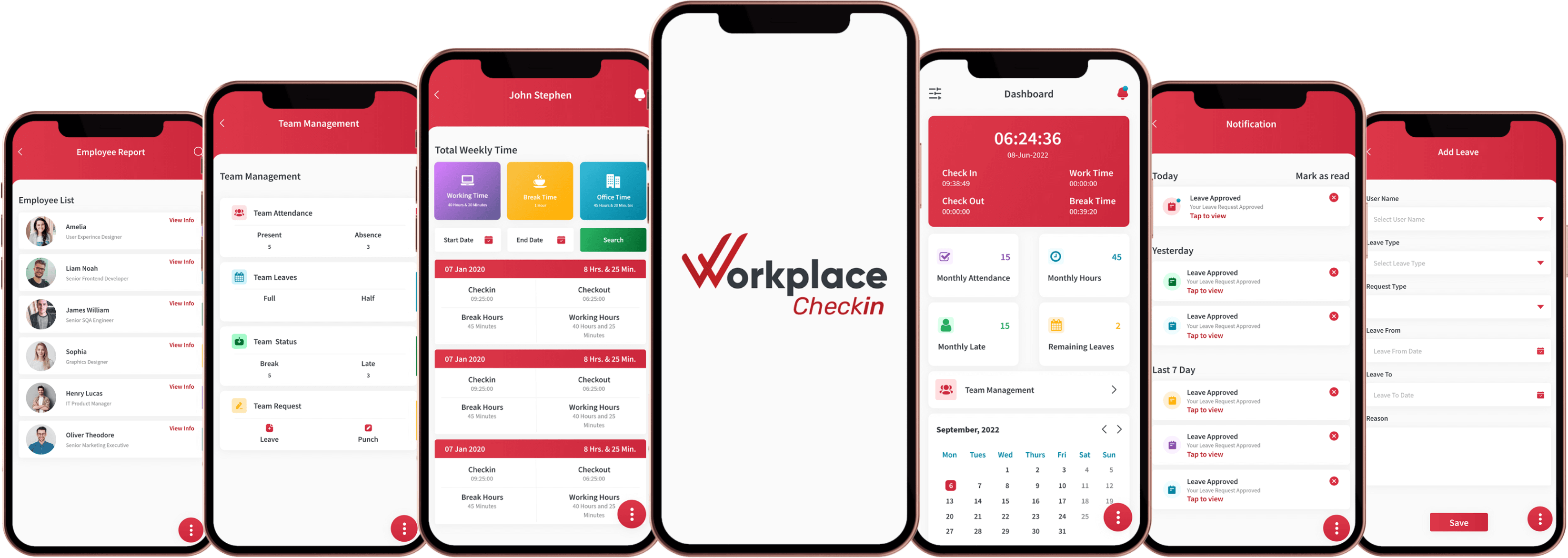

10 Best Practices for Successful HRIS Implementation
Overview of HRIS Implementation
Understanding HRIS
Human Resource Information System (HRIS) is a comprehensive software solution designed to streamline and enhance various HR functions within an organization. It integrates technology to manage and automate processes related to human resources, including recruitment, onboarding, performance management, payroll, and more.
Core Components of HRIS
HRIS typically consists of a centralized database that stores employee information, allowing for efficient data management and retrieval. It also includes modules or features for specific HR functions, providing a unified platform for HR professionals to carry out their responsibilities.
Objectives of HRIS Implementation
The primary objectives of implementing an HRIS include improving operational efficiency, enhancing data accuracy, facilitating better decision-making through data insights, and ultimately supporting the organization's overall strategic goals.
Evolution of HRIS
Over time, HRIS has evolved from basic record-keeping systems to sophisticated, cloud-based platforms that offer advanced analytics, mobile access, and integration with other business systems. This evolution reflects the increasing recognition of HRIS as a strategic tool for organizational success.
Role in Modern HR Management
In the fast-paced world of modern HR management, HRIS has become indispensable. It empowers HR professionals by automating routine tasks, enabling data-driven decision-making, and contributing to the strategic alignment of HR practices with broader organizational objectives.
Importance of Best Practices
Ensuring Successful Implementation
Implementing an HRIS involves a significant investment of time, resources, and effort. Best practices are essential to ensure that this investment results in a successful and effective system that meets the organization's needs.
Mitigating Risks
HRIS implementation comes with inherent risks, including data inaccuracies, system inefficiencies, and employee resistance to change. Best practices act as a roadmap, helping organizations navigate these challenges and mitigate potential risks.
Enhancing Operational Efficiency
Best practices in HRIS implementation focus on optimizing processes, automating tasks, and improving workflow efficiency. This leads to a more streamlined HR function that can handle tasks more effectively and contribute to overall organizational efficiency.
Aligning HRIS with Organizational Goals
Strategic alignment is a cornerstone of best practices. By aligning HRIS with organizational goals, best practices ensure that the system contributes directly to the achievement of broader business objectives, such as talent acquisition, employee development, and compliance.
Maximizing Return on Investment (ROI)
Investing in HRIS is a strategic decision aimed at delivering a positive return on investment. Best practices guide organizations in maximizing the ROI by selecting the right system, customizing it effectively, and ensuring ongoing optimization based on evolving needs.
Creating a Positive Employee Experience
HRIS best practices extend to considerations for the end-users, i.e., employees. By prioritizing user-friendly interfaces, effective training programs, and responsive support systems, organizations can create a positive employee experience with the HRIS.
Facilitating Change Management
Change is inevitable during HRIS implementation. Best practices in change management ensure that employees are informed, engaged, and supported throughout the transition, reducing resistance and promoting a smoother adoption process.
Continuous Improvement
Best practices go beyond the initial implementation phase. They emphasize the importance of continuous improvement, encouraging organizations to regularly evaluate system performance, gather user feedback, and adapt the HRIS to meet evolving needs.
Legal Compliance and Data Security
Compliance with legal standards and ensuring data security are paramount. Best practices guide organizations in developing HRIS strategies that adhere to regulations, safeguard sensitive information, and minimize legal risks.
Demonstrating Leadership Commitment
The importance of best practices is underscored by the commitment of organizational leadership. When leaders prioritize and actively support the implementation of HRIS best practices, it sets a tone for success and fosters a culture of innovation and improvement.

Best Practice 1: Strategic Planning
Setting Clear Objectives
Establishing Well-Defined and Measurable Objectives
Strategic planning in HRIS implementation begins with setting clear, well-defined, and measurable objectives. These objectives serve as the guiding principles for the entire strategy, outlining what the organization aims to achieve through the implementation of the HRIS system. Well-crafted objectives provide a roadmap for decision-making, resource allocation, and assessing the success of the strategy.
Example:
Objective: Streamline the recruitment process by reducing the time-to-hire and enhancing the quality of candidates.
Significance: Clear objectives, such as improving recruitment efficiency, provide a specific target that the HRIS strategy aims to address, allowing the organization to measure progress and success in this particular area.
Aligning HRIS with Organizational Goals
Ensuring HRIS Strategy is Closely Aligned with Broader Goals
Alignment with organizational goals is a fundamental aspect of effective HRIS strategic planning. The HRIS system should not operate in isolation but should be intricately connected with the broader goals and mission of the organization. This alignment ensures that the HRIS strategy contributes directly to the overall success of the organization, whether it be in terms of talent acquisition, employee development, or compliance.
Example:
Organizational Goal: Achieve a 20% improvement in overall operational efficiency within the next fiscal year.
Significance: Aligning the HRIS strategy with this organizational goal ensures that the implementation focuses on processes and functionalities that directly contribute to improving operational efficiency, thus supporting the broader organizational objective.
Involving Key Stakeholders
Engaging HR Professionals, IT Teams, and Other Stakeholders
Strategic planning is most effective when it involves a diverse group of key stakeholders. This includes HR professionals who understand the day-to-day operational needs, IT teams responsible for the technical aspects of implementation, and other relevant stakeholders from different departments. Engaging these stakeholders ensures a holistic approach to HRIS strategy development, incorporating diverse perspectives and expertise.
Example:
Key Stakeholders: HR Manager, IT Director, Department Heads from various business units.
Significance: Involving key stakeholders, fosters collaboration and ensures that the HRIS strategy is well-rounded, addressing the needs and concerns of different departments. This collaborative approach enhances the chances of successful implementation and user adoption.
Why is Strategic Planning Important?
Strategic planning sets the foundation for HRIS implementation success. Clear objectives provide a roadmap, aligning the strategy with organizational goals ensures relevance and contribution to broader success, and involving key stakeholders brings diverse expertise into the planning process. This best practice ensures that the HRIS strategy is purposeful, well-informed, and capable of driving transformative change within the organization. It establishes a strong starting point for subsequent phases of HRIS implementation, guiding decision-making and actions throughout the process.
Best Practice 2: Needs Assessment
Identifying HR Challenges and Requirements
Conducting a Thorough Analysis
Effective HRIS implementation begins with a comprehensive needs assessment. This involves conducting a thorough analysis to identify specific HR challenges and requirements that the HRIS system should address. By recognizing the unique pain points and necessities within the HR function, organizations can tailor the HRIS strategy to meet their specific needs.
Example:
Challenge: High Turnover Rates in Specific Departments.
Significance: Identifying this challenge through the needs assessment allows the organization to prioritize features within the HRIS system that can help improve employee retention strategies in those specific departments.
Conducting a Comprehensive Analysis
Performing a Comprehensive Assessment of Existing HR Processes
The needs assessment should go beyond identifying challenges and extend to a comprehensive analysis of existing HR processes. This involves understanding how various HR functions currently operate, the efficiency of these processes, and potential areas for improvement. The goal is to have a holistic view of the HR landscape, enabling informed decisions during the HRIS implementation.
Example:
Process Analysis: Recruitment Process involves manual paperwork and lacks a centralized database for candidate information.
Significance: Recognizing this inefficiency prompts the organization to prioritize HRIS features that streamline the recruitment process, such as automated workflows and a centralized candidate database.
Why is Needs Assessment Important?
Tailored Solutions:
The needs assessment ensures that the HRIS system is not a one-size-fits-all solution. Instead, it is tailored to address the specific challenges and requirements unique to the organization.
Efficiency Gains:
By conducting a comprehensive analysis, organizations can identify areas where HR processes can be streamlined and optimized. This sets the stage for efficiency gains through the HRIS implementation.
Strategic Decision-Making:
The insights gained from the needs assessment inform strategic decision-making. Knowing the specific challenges and inefficiencies allows organizations to prioritize features and functionalities that will have the most significant impact on HR performance.
User Adoption:
Understanding the existing processes ensures that the HRIS system is designed in a way that aligns with the familiar workflows of HR professionals. This, in turn, facilitates smoother user adoption.
Cost-Effective Solutions:
By focusing on identified needs, organizations can avoid unnecessary features and functionalities, ensuring that the HRIS implementation remains cost-effective and aligns with budget constraints.
In essence, needs assessment ensures that the HRIS strategy is rooted in a deep understanding of the organization's HR landscape, providing a solid foundation for subsequent phases of implementation. It positions the organization to make informed decisions that will result in a more efficient and effective HRIS system tailored to its unique needs.
Best Practice 3: Technology Selection
Criteria for Choosing the Right HRIS System
Defining the Criteria for Selecting an HRIS System
Selecting the right HRIS system is a pivotal decision in the implementation process. Defining specific criteria ensures that the chosen system aligns seamlessly with the organization's unique needs. These criteria encompass various aspects, including functionality, user-friendliness, cost-effectiveness, and vendor reputation.
Example:
Criterion: User-Friendly Interface for Easy Adoption.
Significance: Defining this criterion prioritizes HRIS systems that prioritize a user-friendly interface, facilitating easier adoption by HR professionals and employees.
Evaluating Scalability and Integration Capabilities
Ensuring that the Chosen HRIS System Can Scale with the Organization's Growth
Scalability is crucial for accommodating the organization's growth. A well-selected HRIS system should have the capacity to scale along with the organization, adapting to increased data, users, and functionalities. Evaluating scalability ensures that the HRIS system remains effective and efficient as the organization expands.
Example:
Scalability Check: Assessing the system's ability to handle a 20% increase in employee data over the next two years.
Significance: This evaluation ensures that the chosen HRIS system can handle the anticipated growth, avoiding potential bottlenecks and performance issues.
Ensuring Seamless Integration with Existing Technologies
Integration capabilities are equally important. The HRIS system should seamlessly integrate with existing technologies within the organization's ecosystem. This includes integration with other HR tools, such as payroll or performance management systems, and broader organizational systems, such as accounting or customer relationship management software.
Example:
Integration Check: Ensuring the HRIS system can integrate with the existing payroll software.
Significance: Seamless integration avoids data silos, enhances data consistency, and enables a more holistic view of organizational processes.

Why is Technology Selection Important?
Alignment with Organizational Goals:
By defining criteria based on organizational needs, the technology selection process ensures that the HRIS system aligns with the broader goals and mission of the organization.
Efficiency and User Adoption:
Criteria such as user-friendliness contribute to the efficiency of HR professionals and employees. An easy-to-use system is more likely to be adopted successfully throughout the organization.
Future-Proofing:
Scalability checks future-proof the HRIS investment. Ensuring the system can grow with the organization minimizes the need for frequent system overhauls and replacements.
Cost-Effectiveness:
Choosing a system with the right capabilities based on defined criteria ensures that the organization invests in features that are necessary, avoiding unnecessary costs associated with excessive functionalities.
Data Consistency and Collaboration:
Integration capabilities contribute to data consistency and collaboration across different departments. A well-integrated HRIS system enhances overall organizational efficiency.
Best Practice 4: Customization and Configuration
Tailoring HRIS to Unique Organizational Needs
Customizing the HRIS System to Match Specific Requirements and Workflows
Customization is a critical aspect of HRIS implementation, ensuring that the system aligns closely with the unique needs and workflows of the organization. This involves tailoring the HRIS system to accommodate specific HR processes, industry requirements, and organizational preferences.
Example:
Customization: Adapting the HRIS system to incorporate industry-specific compliance requirements.
Significance: Customizing the system to meet industry-specific standards ensures that the organization remains compliant with regulations relevant to its sector.
Configuring Workflows and Data Fields
Optimizing the System by Configuring Workflows and Data Fields
Configuration focuses on optimizing the HRIS system by fine-tuning workflows and data fields. This process involves setting up the system to match the organization's unique HR processes, including approvals, notifications, and data collection points. By configuring workflows and data fields, the HRIS system becomes a seamless extension of the existing HR processes.
Example:
Workflow Configuration: Streamlining the employee onboarding process by automating approval workflows and capturing essential data fields.
Significance: Configuring workflows enhances efficiency by automating manual tasks, reducing errors, and improving overall process consistency. Custom data fields ensure that the system captures and organizes information specific to the organization's needs.
Why is Customization and Configuration Important?
Alignment with Organizational Workflows:
Customization ensures that the HRIS system complements, rather than disrupts, existing organizational workflows. This alignment enhances user acceptance and integration into daily operations.
Enhanced Efficiency:
Configuration of workflows and data fields streamlines HR processes, reducing manual intervention and improving the overall efficiency of HR tasks.
Adaptability to Change:
A well-customized and configured HRIS system is adaptable to changes in organizational processes. As workflows evolve, the system can be adjusted to accommodate these changes seamlessly.
User Adoption:
Customized interfaces and workflows contribute to a user-friendly experience, promoting higher user adoption rates among HR professionals and employees.
Data Accuracy:
Configuration ensures that the data fields capture relevant information accurately, contributing to improved data accuracy and integrity within the HRIS system.
Cost-Effective Solutions:
Customization allows organizations to tailor the system to their specific needs, avoiding unnecessary features and functionalities that may incur additional costs.
By following customizations and configurations, organizations ensure that their HRIS system is not just a standardized solution but a bespoke tool that enhances their unique HR operations. This practice contributes to a smoother implementation process and positions the organization for long-term success with its HRIS system.
Best Practice 5: Data Management and Security
Ensuring Data Accuracy and Integrity
Implementing Practices to Ensure the Accuracy and Integrity of Data within the HRIS System
Data accuracy and integrity are paramount in any HRIS implementation. This practice involves implementing robust measures to ensure that the data stored within the HRIS system is accurate, consistent, and reliable. Maintaining high data quality is essential for informed decision-making, regulatory compliance, and overall HR efficiency.
Example:
Data Accuracy Measures: Implementing validation checks during data entry to prevent errors in employee records.
Significance:
By preventing errors at the point of entry, organizations ensure that the data used for HR processes, such as payroll or performance management, is reliable and error-free.
Why is Data Management & Security Important?
Informed Decision-Making:
Accurate data is the foundation for informed decision-making. HR professionals rely on HRIS data for strategic planning, talent management, and other critical functions.
Regulatory Compliance:
Many industries have strict regulations regarding the accuracy and security of employee data. Adhering to data accuracy practices ensures compliance with these regulations, minimizing legal risks.
Operational Efficiency:
Accurate data contributes to the overall efficiency of HR processes. From payroll processing to talent acquisition, organizations can trust the data within the HRIS system for smooth and error-free operations.
Employee Trust:
Employees trust HR systems to store their personal and sensitive information securely. Ensuring data accuracy builds trust among employees that their information is handled with care and precision.
Effective Reporting and Analytics:
Reliable data is essential for generating meaningful reports and analytics. HR professionals rely on accurate data to identify trends, measure performance, and make data-driven decisions.
Mitigating Risks:
Inaccurate data can lead to various risks, including financial errors, compliance issues, and reputational damage. Implementing data accuracy practices helps mitigate these risks.
Long-Term System Health:
Ensuring data accuracy contributes to the long-term health of the HRIS system. Clean and accurate data sets the foundation for scalability and adaptability as the organization evolves.
By prioritizing data accuracy and integrity, organizations lay the groundwork for a reliable and efficient HRIS system. This practice is not only about preventing errors but also about fostering a data-driven culture within the organization, where the information in the HRIS system is a trusted asset for decision-makers at all levels.
Best Practice 6: Change Management
Developing a Comprehensive Change Management Plan
Creating a Plan to Manage the Organizational Changes Associated with HRIS Implementation Effectively
Change management is a crucial aspect of any HRIS implementation, recognizing that introducing a new system involves shifts in processes, workflows, and the overall work culture. Developing a comprehensive change management plan is essential to guide the organization through these transitions.
Example:
Change Management Plan: Outlining communication strategies, training schedules, and support mechanisms for the HRIS implementation.
Significance: A well-developed change management plan ensures that the organization is prepared to navigate the challenges associated with the introduction of the HRIS system.
Addressing Resistance and Facilitating a Smooth Transition
Strategies for Addressing Employee Resistance and Ensuring a Smooth Transition to the New HRIS System
Change often encounters resistance, and implementing a new HRIS system is no exception. Addressing resistance requires strategic planning and proactive measures to ensure a smooth transition. This involves not only technical adjustments but also addressing the human aspects of change, including concerns and uncertainties among employees.
Example:
Resistance Mitigation Strategies: Conducting town hall meetings, providing hands-on training, and establishing feedback channels to address concerns.
Significance: By addressing resistance and facilitating a smooth transition, organizations can minimize disruptions, enhance user acceptance, and maximize the benefits of the HRIS system.
Why is Change Management Important?
Minimizing Disruptions:
Change management ensures that the implementation of the HRIS system does not disrupt day-to-day operations. A well-managed transition minimizes downtime and maintains productivity.
Employee Buy-In:
Addressing resistance fosters employee buy-in. When employees understand the purpose, benefits, and impact of the new system, they are more likely to embrace the changes positively.
Enhancing User Adoption:
A smooth transition contributes to higher user adoption rates. Employees are more likely to use and leverage the HRIS system effectively when the implementation is well-managed.
Cultural Integration:
Change management considers the organizational culture and aligns the HRIS implementation with existing values. This integration ensures that the new system aligns with the way work is done within the organization.
Proactive Issue Resolution:
A comprehensive change management plan includes mechanisms for identifying and addressing issues proactively. This ensures that challenges are addressed promptly, preventing them from escalating.
Positive Employee Experience:
Managing change effectively contributes to a positive employee experience. Employees feel supported, heard, and engaged throughout the implementation process.
Optimizing System Utilization:
Change management not only focuses on overcoming resistance but also on ensuring that employees are equipped with the knowledge and skills to utilize the HRIS system optimally.
By prioritizing change management, organizations set the stage for a successful HRIS implementation. It's not just about introducing a new technology; it's about navigating the human aspects of change to ensure a seamless and positive transition for the entire organization.
Best Practice 7: Communication Strategies
Creating a Communication Plan
Developing a Comprehensive Communication Plan to Keep Stakeholders Informed Throughout the HRIS Implementation Process
Communication is a cornerstone of successful HRIS implementation. Developing a comprehensive communication plan is essential to ensure that all stakeholders are well-informed about the changes, progress, and benefits associated with the new HRIS system. The plan outlines the strategies, channels, and timelines for effective communication.
Example:
Communication Plan: Outlining regular newsletters, town hall meetings, and dedicated communication channels for HRIS-related updates.
Significance: A well-crafted communication plan fosters transparency, builds trust, and keeps stakeholders engaged throughout the implementation journey.
Keeping Stakeholders Informed Throughout the Process
Ensuring Transparent Communication to Maintain Engagement and Understanding Among All Stakeholders
Stakeholders, including employees, management, and IT teams, play a vital role in the success of HRIS implementation. Transparent communication ensures that all stakeholders have a clear understanding of the reasons behind the HRIS implementation, its impact on their roles, and the expected benefits.
Example:
Regular Updates: Providing regular updates on the progress of HRIS implementation, addressing concerns, and sharing success stories.
Significance: Keeping stakeholders informed fosters a collaborative atmosphere, aligns expectations, and encourages a sense of ownership and support for the HRIS initiative.
Why Communication Strategies are Important?
Alignment of Expectations:
A communication plan aligns the expectations of all stakeholders by clearly outlining the goals, timelines, and expected outcomes of the HRIS implementation.
Engagement and Support:
Transparent communication fosters stakeholder engagement and support. When stakeholders understand the purpose and benefits of the HRIS system, they are more likely to actively contribute to its success.
Mitigation of Concerns:
Regular updates and transparent communication provide opportunities to address concerns and questions proactively. This helps in mitigating potential issues before they escalate.
Building Trust:
Trust is built through open and honest communication. When stakeholders trust that they are being kept informed, they are more likely to embrace the changes with confidence.
Employee Morale:
Transparent communication helps in maintaining or even boosting employee morale. When employees understand the broader context of the HRIS implementation, they are more likely to feel valued and engaged.
Alignment with Organizational Goals:
Communication strategies ensure that the HRIS implementation is aligned with broader organizational goals. This alignment contributes to a sense of purpose and direction among stakeholders.
Feedback Collection:
Regular communication provides avenues for stakeholders to provide feedback. This feedback loop is crucial for identifying issues, making necessary adjustments, and continuously improving the implementation process.
Celebrating Successes:
Communication strategies also include celebrating milestones and successes. Recognizing achievements during the HRIS implementation journey boosts morale and reinforces the positive aspects of the change.
By prioritizing communication strategies, organizations create an environment where stakeholders are informed, engaged, and supportive of the HRIS implementation. This practice is not only about disseminating information but also about creating a collaborative and transparent culture that contributes to the overall success of the initiative.
Best Practice 8: Data Migration
Planning and Executing Effective Data Migration
Strategies for Planning and Executing Seamless Data Migration to the New HRIS System
Data migration is a critical phase of HRIS implementation, involving the transfer of existing data to the new system. Planning and executing this process effectively are essential to ensure the accuracy, completeness, and integrity of data in the new HRIS system.
Example:
Data Migration Plan: Outlining the sequence of data migration, data validation checks, and contingency plans for potential issues.
Significance: Effective data migration sets the foundation for accurate and reliable information within the HRIS system.
Minimizing Disruptions During the Migration Process
Mitigating Potential Disruptions and Ensuring Continuity During the Data Migration Phase
Data migration can potentially disrupt normal HR operations if not handled carefully. This best practice focuses on strategies to minimize disruptions, ensuring that the migration process is smooth, efficient, and does not adversely impact ongoing HR processes.
Example:
Contingency Plans: Developing backup and rollback plans in case of unexpected issues during data migration.
Significance: Minimizing disruptions safeguards against data errors, ensures business continuity, and maintains the trust of users in the reliability of the HRIS system.
Why is Data Migration Important?
Data Accuracy and Integrity:
Effective data migration is fundamental to maintaining data accuracy and integrity in the new HRIS system. The process ensures that all historical and current data is transferred accurately.
Business Continuity:
Minimizing disruptions during data migration contributes to business continuity. HR processes can continue seamlessly without significant interruptions, ensuring the smooth functioning of the organization.
User Confidence:
A smooth data migration process instills confidence among users in the reliability of the new HRIS system. Users are more likely to embrace the change when they see that their data is transferred accurately.
Efficiency in HR Operations:
When data migration is executed effectively, HR professionals can access the necessary information without delays. This efficiency is crucial for day-to-day HR operations.
Compliance with Regulations:
Data migration strategies should also consider compliance with data protection regulations. Ensuring that sensitive information is transferred securely is essential for legal and regulatory compliance.
Reduced Downtime:
Planning for potential disruptions and having contingency measures in place reduces downtime during the migration process. This is critical for maintaining productivity and meeting HR service level agreements.
User Training and Support:
Minimizing disruptions includes providing adequate training and support to users during the transition. This ensures that employees can quickly adapt to the new system and continue their work without significant delays.
Post-Migration Validation:
After migration, validating the accuracy of the transferred data is crucial. This post-migration validation ensures that any discrepancies are identified and addressed promptly.
Scalability and Future Adaptations:
Effective data migration sets the stage for the scalability of the HRIS system. As the organization grows, the system should be able to adapt, and a well-executed data migration facilitates this scalability.
By prioritizing effective data migration, organizations pave the way for a successful transition to the new HRIS system. This practice is not only about moving data but also about ensuring that the data is a reliable asset that supports HR processes and organizational decision-making.
Best Practice 9: Training and Development
Designing Training Programs for HR Professionals and Employees
Creating Comprehensive Training Programs to Ensure Proficiency Among HR Professionals and Employees
Training is a cornerstone of successful HRIS implementation. Designing comprehensive training programs is crucial to equip HR professionals and employees with the knowledge and skills needed to effectively use the new HRIS system.
Example:
Training Curriculum: Developing a curriculum that covers system functionalities, data entry processes, and troubleshooting procedures.
Significance: Well-designed training programs contribute to user proficiency, reducing the learning curve and enhancing the overall effectiveness of the HRIS system.
Ensuring Ongoing Support and Skill Development
Establishing Ongoing Support Mechanisms and Opportunities for Continuous Skill Development
Training doesn't end with the initial implementation; it's an ongoing process. This best practice focuses on creating a support structure that ensures continuous skill development among users. Ongoing support mechanisms address evolving needs and challenges as users interact with the HRIS system over time.
Example:
Helpdesk Support: Establishing a helpdesk for users to seek assistance, providing regular webinars for advanced features, and creating a knowledge base for self-help.
Significance: Ongoing support and skill development contribute to sustained user confidence, adaptability to system updates, and the utilization of advanced features.
Why is Training & Development Important?
Reducing Learning Curve:
Comprehensive training programs are designed to reduce the learning curve for HR professionals and employees, enabling them to quickly adapt to the new HRIS system.
Effective System Utilization:
Training ensures that users can effectively utilize the functionalities of the HRIS system, maximizing its potential to streamline HR processes and data management.
User Proficiency:
Ongoing support and skill development contribute to sustained user proficiency. Users feel confident and empowered to use the HRIS system to its full capacity.
Adaptability to Updates:
As the HRIS system evolves with updates and new features, ongoing training ensures that users can adapt to these changes seamlessly.
Troubleshooting and Issue Resolution:
Training programs include guidance on troubleshooting common issues. This empowers users to address minor challenges independently, reducing dependency on external support.
Efficient Data Management:
Proficient users contribute to efficient data management. They can enter, retrieve, and analyze data accurately, contributing to the overall effectiveness of HR processes.
Employee Confidence:
Training and ongoing support enhance employee confidence in using the HRIS system. Confidence leads to increased user engagement and a positive perception of the system.
Continuous Improvement:
Continuous skill development creates a culture of continuous improvement. Users are encouraged to explore advanced features and functionalities, contributing to the organization's overall efficiency.
Adapting to Changing Needs:
As organizational needs evolve, ongoing training ensures that users can adapt to changing requirements. This adaptability is essential for the HRIS system to remain a valuable asset.
Employee Satisfaction:
Employees who feel supported through training and ongoing development are likely to be more satisfied with the tools and systems provided by the organization.
By prioritizing training and development, organizations invest in the long-term success of HRIS implementation. This practice is not only about imparting knowledge but also about fostering a culture of continuous learning and improvement among HR professionals and employees.
Best Practice 10: Continuous Improvement
Monitoring HRIS Performance
Implementing Mechanisms to Continuously Monitor and Evaluate the Performance of the HRIS System
Continuous improvement is a fundamental aspect of successful HRIS implementation. This best practice focuses on establishing mechanisms for ongoing monitoring and evaluation of the HRIS system's performance to ensure it remains aligned with organizational goals and evolving needs.
Example:
Performance Metrics Dashboard: Implementing a dashboard that tracks key performance indicators (KPIs) such as system responsiveness, data accuracy, and user satisfaction.
Significance: Continuous monitoring allows organizations to identify areas for enhancement, address emerging issues promptly, and adapt the HRIS system to meet changing requirements.
Why Continuous Improvement Important?
Optimizing System Efficiency:
Continuous monitoring enables organizations to identify bottlenecks or inefficiencies in the HRIS system. This information allows for targeted optimizations to enhance overall system efficiency.
Proactive Issue Identification:
Monitoring HRIS performance proactively identifies potential issues before they escalate. This proactive approach helps in addressing challenges swiftly, minimizing disruptions to HR operations.
User Satisfaction:
Regular evaluation of user feedback and satisfaction metrics contributes to a positive user experience. Understanding user needs allows organizations to tailor the HRIS system to meet expectations.
Data Accuracy and Integrity:
Continuous monitoring ensures that data accuracy and integrity are maintained over time. Regular checks can identify discrepancies and data inconsistencies, facilitating prompt corrective actions.
Alignment with Organizational Goals:
By continuously evaluating HRIS performance, organizations can ensure that the system remains aligned with evolving organizational goals. This alignment is crucial for the HRIS system to remain a strategic asset.
Scalability:
As organizational needs evolve, continuous monitoring helps assess the scalability of the HRIS system. It ensures that the system can accommodate growth and changes in HR processes.
Security and Compliance:
Regular monitoring includes assessing data security measures and ensuring compliance with relevant regulations. This is essential for maintaining the confidentiality and integrity of sensitive HR information.
Resource Optimization:
Organizations can optimize resources by identifying underutilized features or areas where additional training is needed. This optimization contributes to efficient use of the HRIS system.
Technology Upgrades:
Continuous monitoring facilitates the identification of opportunities for technology upgrades. Staying current with technological advancements ensures that the HRIS system remains at the forefront of HR technology.
Strategic Decision-Making:
Performance monitoring provides valuable insights for strategic decision-making. Data-driven assessments guide decisions related to system enhancements, future investments, and overall HRIS strategy.
User Training Needs:
Monitoring can reveal patterns in user behavior and proficiency. This information helps in tailoring ongoing training programs to address specific user needs and improve overall system adoption.
Adaptation to Industry Trends:
Continuous improvement involves staying informed about industry trends. Evaluating the HRIS system against emerging trends allows organizations to remain competitive and innovative in their HR practices.
By incorporating continuous improvement practices, organizations ensure that their HRIS system remains a dynamic and responsive tool that evolves alongside the organization's growth and changing HR landscape. This ongoing commitment to excellence positions the HRIS system as a strategic enabler for achieving long-term organizational success.
Adapting to Evolving Organizational Needs and Technological Advancements
Remaining Adaptable to Changes in Organizational Goals and Embracing Technological Advancements
Adaptability is a crucial component of successful HRIS implementation. This best practice emphasizes the importance of remaining flexible and responsive to changes in both organizational objectives and the broader technological landscape.
Key Considerations:
1. Aligning with Organizational Objectives:
The strategic goals and mission of an organization can evolve over time due to changes in the market, industry, or internal dynamics. Adapting the HRIS strategy ensures that it continues to support and align with the shifting organizational objectives.
Example: If an organization undergoes a strategic shift towards talent development, the HRIS strategy should be flexible enough to accommodate new modules or features supporting this focus.
2. Embracing Technological Advancements:
The field of HR technology is dynamic, with continuous advancements in software capabilities, data analytics, and user experience. Remaining adaptable involves embracing these technological advancements to enhance the HRIS system's functionality and effectiveness.
Example: Integrating artificial intelligence (AI) capabilities into the HRIS system for predictive analytics, enhancing talent acquisition, and providing insights for strategic workforce planning.
3. Regular System Evaluations:
Implementing a system of regular evaluations ensures that the HRIS strategy is always aligned with current organizational needs and technological standards. This involves assessing whether the existing HRIS system meets its objectives and identifying areas for improvement.
Example: Conducting annual reviews to evaluate the system's performance, user satisfaction, and alignment with organizational goals.
4. Scalability and Future-Proofing:
Adapting to evolving needs requires a system that is scalable and future-proof. Ensuring that the HRIS system can grow with the organization and easily integrate with emerging technologies positions it as a long-term solution.
Example: Choosing an HRIS system that allows seamless integration with emerging technologies, such as blockchain for secure data management.
5. User Feedback Integration:
Actively seeking and integrating user feedback is integral to adaptability. Users at various levels can provide insights into the practical challenges they face, helping to tailor the HRIS system to their evolving needs.
Example: Creating a feedback loop where users can suggest improvements or report issues, and incorporating this feedback into regular system updates.
6. Change Management Strategies:
As the HRIS system evolves, change management strategies become essential. Effectively communicating changes, providing adequate training, and addressing any resistance ensures a smooth transition for users.
Example: Implementing a change management plan that includes communication strategies, training sessions, and a phased approach to system updates.
Significance:
- Strategic Alignment:
Adapting to evolving organizational needs ensures that the HRIS strategy remains strategically aligned, contributing meaningfully to organizational success.
- Competitive Advantage:
Embracing technological advancements provides a competitive advantage. Organizations that stay at the forefront of HR technology can drive innovation in their HR practices.
- User Engagement and Satisfaction:
Adapting to user needs enhances user engagement and satisfaction. A system that evolves based on user feedback fosters a positive user experience.
- Efficient HR Processes:
A flexible HRIS strategy contributes to the efficiency of HR processes. It allows for the integration of new features or modules that address emerging HR challenges.
- Future-Proofing Investments:
By remaining adaptable, organizations future-proof their HRIS investments. This ensures that the system continues to deliver value as the organization grows and industry trends evolve.
- Agility in a Changing Landscape:
In the fast-paced business environment, adaptability is synonymous with agility. An adaptable HRIS strategy enables organizations to respond swiftly to changes, whether internal or external.
Adapting to evolving organizational needs and technological advancements is not a one-time effort but an ongoing commitment. It involves a proactive approach to staying informed, embracing change, and leveraging technology to drive HR excellence. Organizations that prioritize adaptability position themselves to navigate the complexities of the modern HR landscape successfully.






